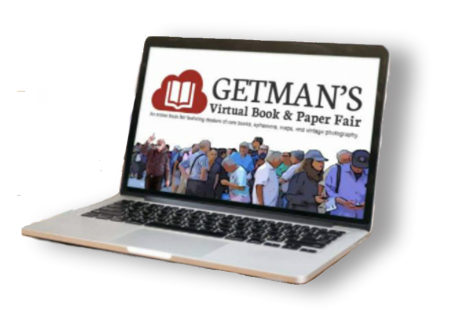TBD, or On the changing nature of collections, collectors, the book trade, the future, and also the past.
/Last month I had the pleasure of attending the New York Antiquarian Book Fair at the Park Avenue Armory for the first time. It was glitzy as heck. There were lots of bright lights, free food and drinks (at least on opening night), and of course, the books. I saw some of the most amazing things I’d ever seen, and in an environment that made everything seem richer just for being there. One visit was not enough to take it all in so I had to go back each of the four days of the fair. I just wandered the aisles, probably looking slightly dazed, trying to take in everything. This was, of course, impossible. With that many beautiful, important things in one place, there’s no way to really see everything. My step count for the weekend however, would make a strong case for my attempt.
I heard a lot at the fair, too. The book trade loves to gossip (what small town doesn’t?) but one of the things I overheard really stood out. Two booksellers were chatting while I meandered about their shared stand. One observed to the other:
“This year, there are four dealers listed as specializing in LGBT materials. Last year there were none.”
This made my heart sing, and I resisted the urge to jump in uninvited to the conversation. YES! I thought, THE TRADE IS CHANGING! And while this is undeniably is a small victory that should be celebrated, I also think it’s part of a larger trend. The book trade is undoubtedly changing, but why? What’s changing it? Why now?
Obviously, I have some opinions about this.
A someone who deals in antiquarian books, I spend a fair amount of time dwelling in the past, and I’ve noticed something: the past is changing. Yep, history is literally being made and remade all the time, and for my part I think it’s fabulous. In recent years, the trade has tended away from the knowns (canned 19th century histories and the like) and into the realms of the new. Archives, photo albums, manuscript diaries - unique, primary source materials. The real gold is in what’s been previously overlooked or written out of the dominant histories. Those are certainly the materials that attract me, and I know I’m not alone in this.
Universities and institutions are looking to fill gaps in their research materials and the historical narratives they help to support. This is coming in the form of ephemera (posters, pamphlets), diaries, letters, archives, and personal photographs, all of which give insight into a particular time, place, or person which generally can’t be gleaned from books. Of course, adding to the historical record also means changing it. Every new story that gets told, every author added to the canon, every rediscovered life changes the narrative of the time and place that surrounded it. It’s exciting stuff, and it’s never over.
I think, to some degree, that’s what a lot of new collectors want too. I mean, why do we collect things? We collect to give context. We collect to enrich our understanding of a subject, but also the world around it and ourselves. When you put a collection together, you’re essentially forming a new world. I mean, look at your bookshelf or closet or record crate: that exact assemblage of items has never existed anywhere, at any time, before now. And odds are it won’t exist like that again. All those things have context, and together they help form a picture of something. That’s you, and that’s great, but what else can you make? Can you make George Sand, or Sylvia Townsend Warner? Can you make the history of black poetry in America? What about the past, present, and future zines and self-publications of your local punk scene? Or copy number 176 of every numbered limited edition book ever printed?*
What hasn’t been done? What needs to be done? What do you love? What do you just want to learn more about? Some collections are formed intentionally, but not all of them. You probably already collect something. The trick to making it a collection and not just a conglomeration of things in proximity to one another is giving it a name, a direction, an intention, and committing to growing it - not just by buying stuff - but by learning more about it and seeing where that leads. It’s people doing exactly that that’s driving change in the book trade right now, as is evidenced by the wealth of wonderful new fairs, dealers, and materials represented. After all, books don’t have to be glitzy to be part of a major collection. They just have to mean something.
*I actually hear someone is doing this and I am INTO IT.
Guest blogger, Bryn Hoffman owns Pyewacket Books, based in Oakland, California, specializing in rare and antiquarian books, photographs, tarot cards, and assorted oddities in a variety of areas including the occult, queer history, and history of sexuality. She was featured in Fine Books and Publications "Bright Young Bookseller” series. She will be exhibiting her wares at the Brooklyn Antiquarian Book Fair in September.
Guest blog posts are welcome. Write to us here.


